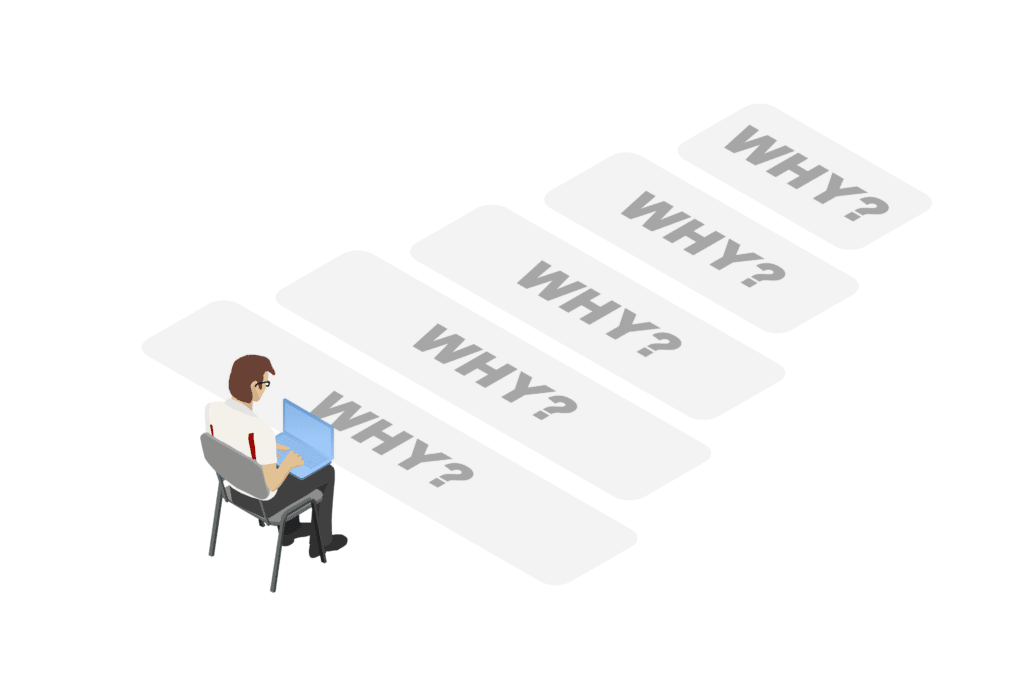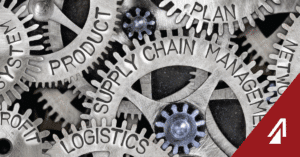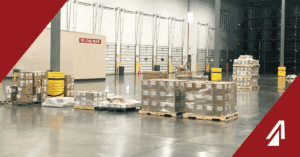Six Sigma training teaches us that “Customers that are satisfied today may not be satisfied tomorrow unless there is process improvement to continually delight the customers”. One of the key tenets of ProTrans’ mission statement is that we “[Focus] on continual improvement opportunities throughout our key quality processes for our external and internal customers that increase efficiencies and profitability” and we maintain that improvement through quality processes like the 5-Why method.
What is the 5-Why method?
According to the American Society for Quality “The five whys … constitute a questioning process designed to drill down into the details of a problem or a solution and peel away the layers of symptoms.” We at ProTrans use it as an internal audit to evaluate the causation for a failure in service or disruption in process. The root-cause analysis breaks down a failed situation into manageable scenarios, or “Whys”, that ultimately led to the failure in service, and also highlight areas for improvement and correction. For example: A customer has a load that delivers a day late and threatens a line shutdown, but the customer was not informed beforehand of the delay. The customer is concerned and files a 5-Why request. Internal investigators would first ask – why?
1. Why was the customer not informed? – Answer – We were not aware the load was late.
2. Why did we not know it was late? – Answer – The track and trace team could not get an update on the driver.
3. Why could the track and trace team not get an update on the driver? – Answer – The driver was not on automated tracking and could not reach dispatch.
4. Why was he not on automated tracking? – Answer – The planner who booked the load did not ask for driver information to add driver to automated tracking.
5. Why did the planner not get the driver information? – Answer – The planner is new and did not know to ask for that information.
The situation can be broken down in five easy questions and not only determine the cause of failure, but a solution as well. In our example, the root cause was a combination of communication from the carrier and lack of training for the planner. To correct this, train the planner that all carriers must have automated tracking to run loads for us and that we must get the driver information for automated tracking before booking the load with a carrier.
Now, a problem may not always need to ask “Why” five times. Sometimes the answer is even simpler – two to four “whys” may be sufficient. Also, problems could take more than five whys to determine the root cause or causes. Problems with multiple causes are more complicated to correct but follow a similar process to standard 5-Whys.
What situations would require a 5-Why?
The 5-Why method is a useful tool for nearly any issue faced in the workplace. It can reveal flaws in both day-to-day business practices and targeted major projects. Mostly, 5-Whys are used to root out and troubleshoot systematic and management practices that are the cause of issues. At ProTrans, we review isolated incidents and trends that adversely impact our customer’s satisfaction, process, and finances, and we also use 5-Why to determine the cause of internal process disruptions.
What happens after a 5-Why request is submitted?
After a 5-Why request is submitted, our 5-Why gatekeeper, an industry specialist, will be notified and take on the case to complete the audit. They will complete the root cause analysis by asking the five whys until the problem is revealed. Then, Quality Assurance will process the analysis and quickly work with internal and external stakeholders to resolve the underlying issues. At this time, they will submit necessary corrective action requests, and monitor the result of the implemented solutions.
What is the major impact of our 5-Why method?
The major impact of the 5-Why method is that we more easily define problems and why they occur, and outline manageable solutions to satisfy both internal and external stakeholders. Take our example from before. By performing a 5-Why audit, we can track and monitor: the reasons why this load was late, the communication we had with the carrier, this carrier’s service issue history, tracking methods that ProTrans uses with all its carriers, as well as how we train new employees. We can present clear and concise solutions to the customer to help prevent actions that cause delays and failures to our customer.
Edward Hodnett, author of The Art of Problem Solving, may have put it best when he said, “If you don’t ask the right questions, you don’t get the right answers. A question asked in the right way often points to its own answer. Asking questions is the ABC of diagnosis. Only the inquiring mind solves problems.” By utilizing the 5-Why method, ProTrans utilizes a simple, efficient method to effectively accomplish our mission to add value, enhance service, optimize efficiency, improve communication, and continually improve.



